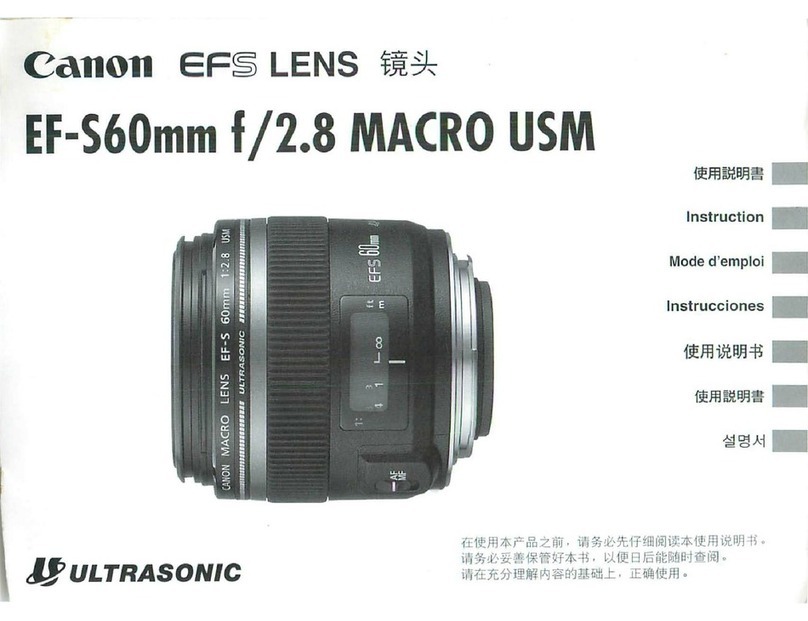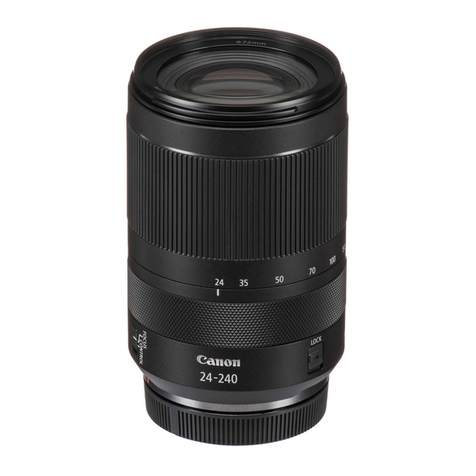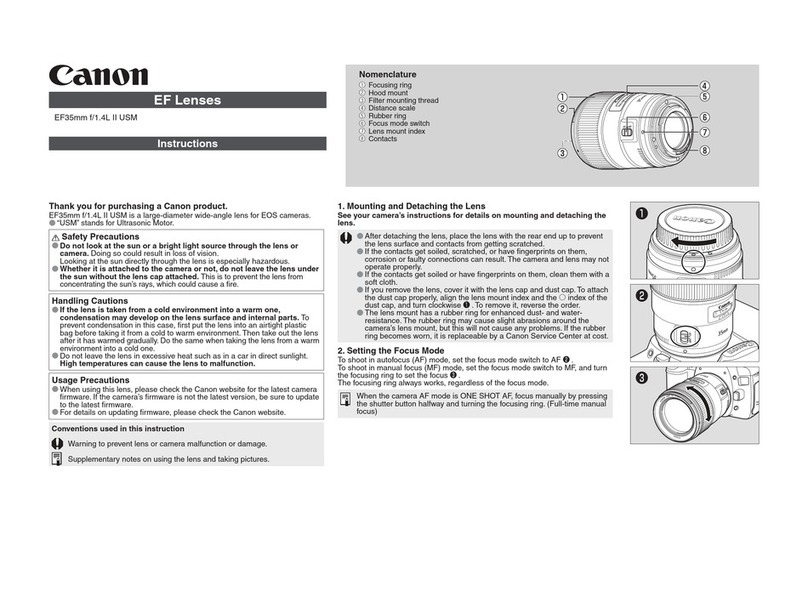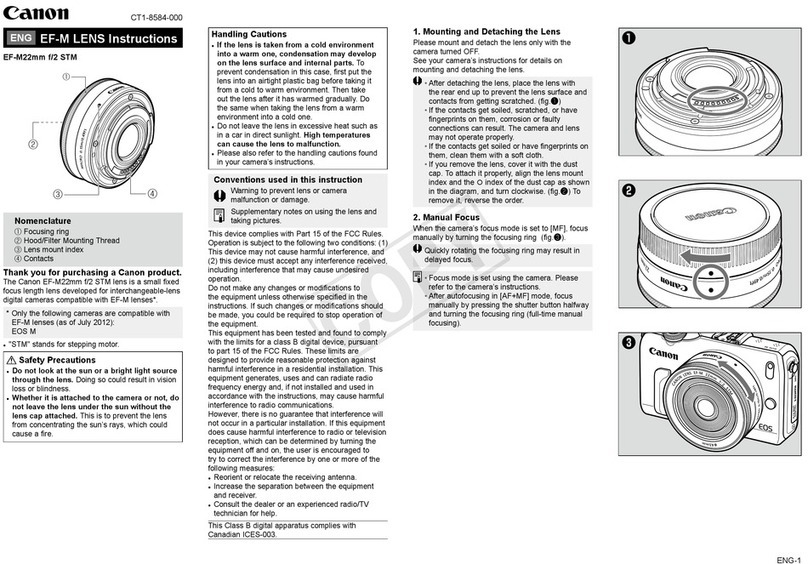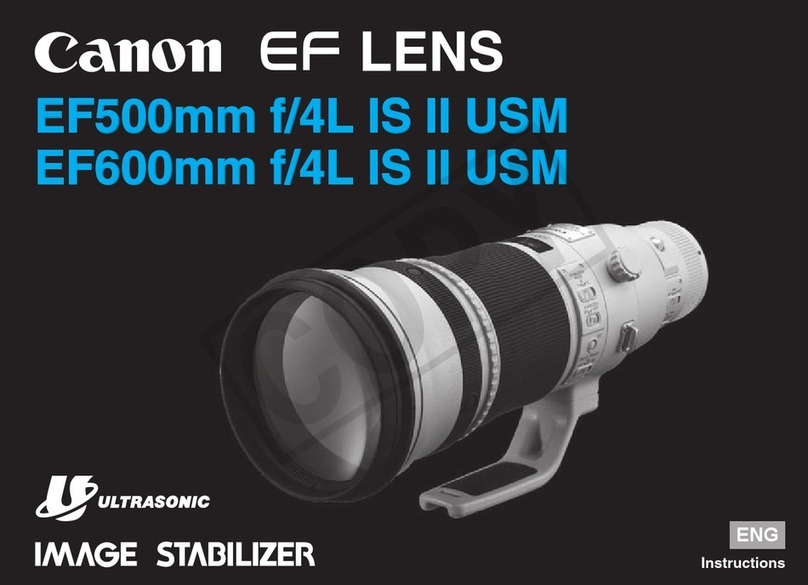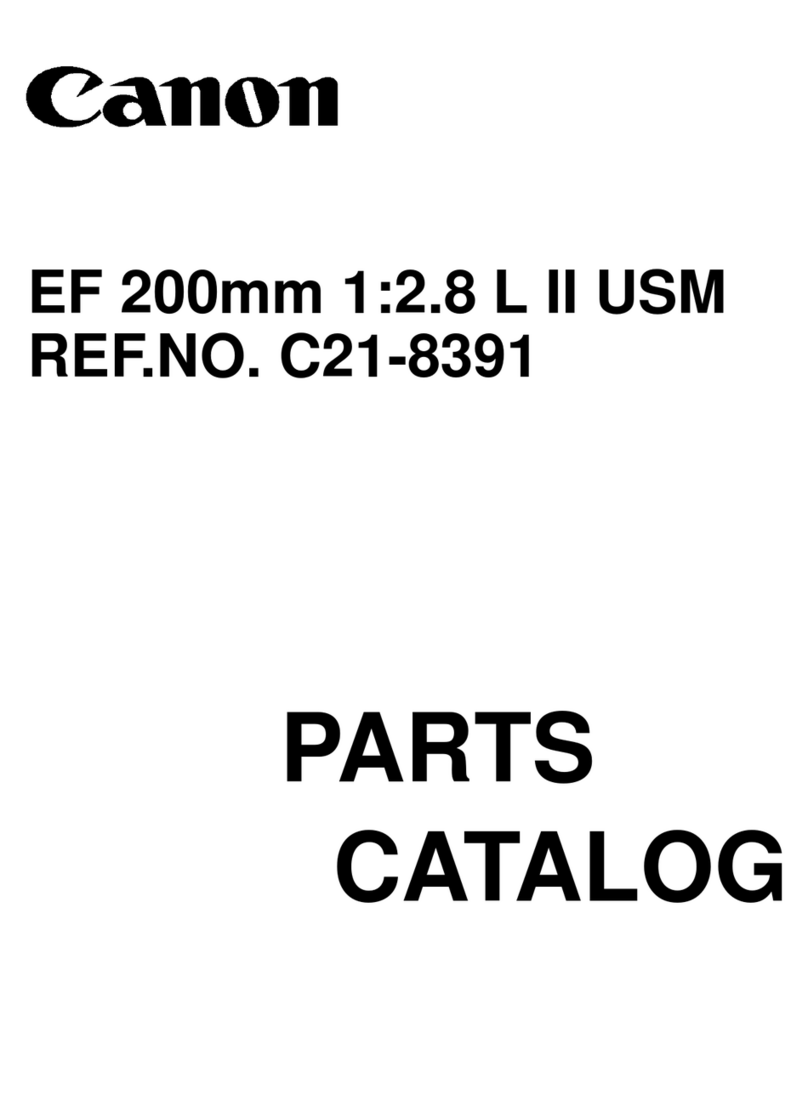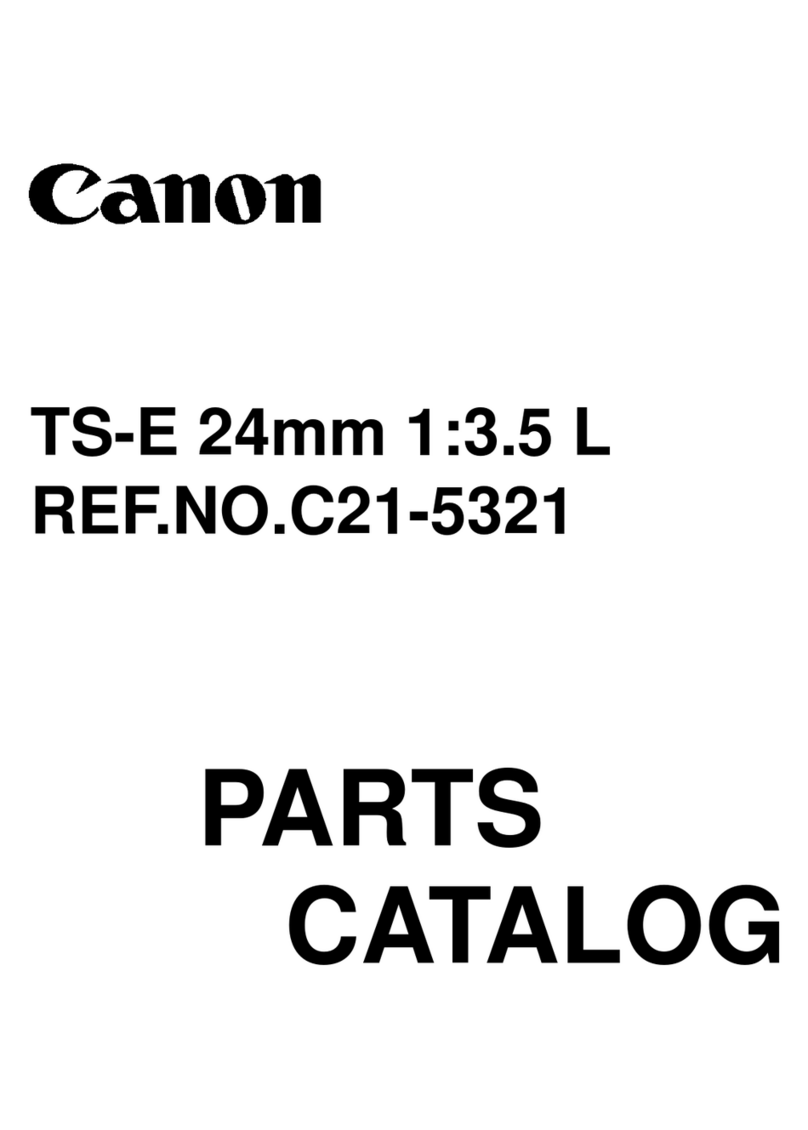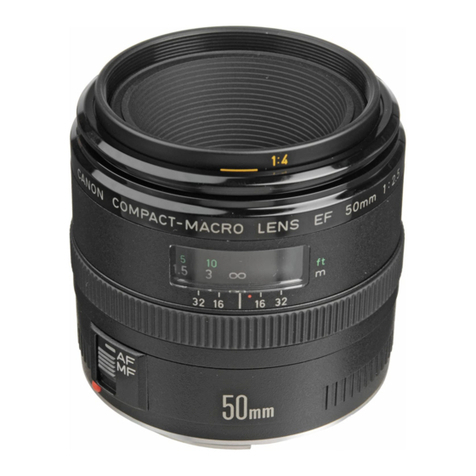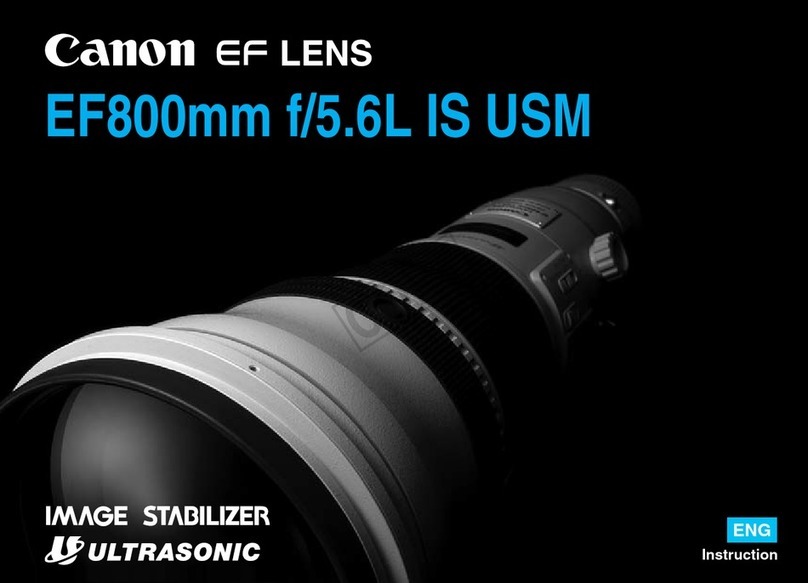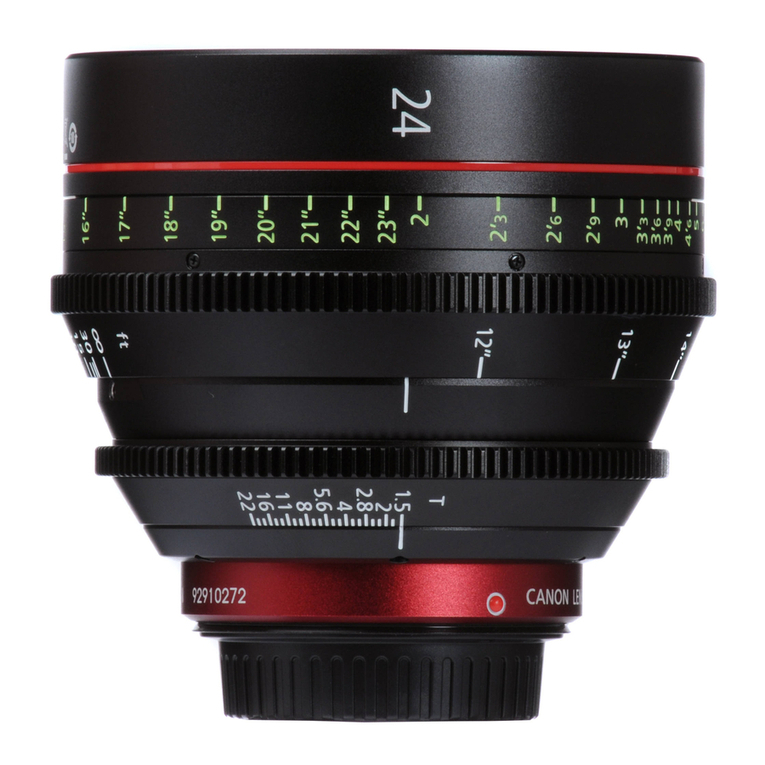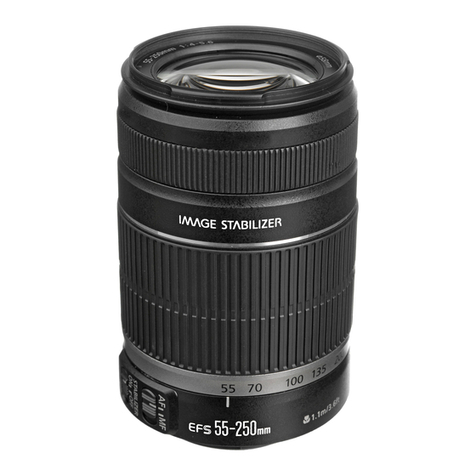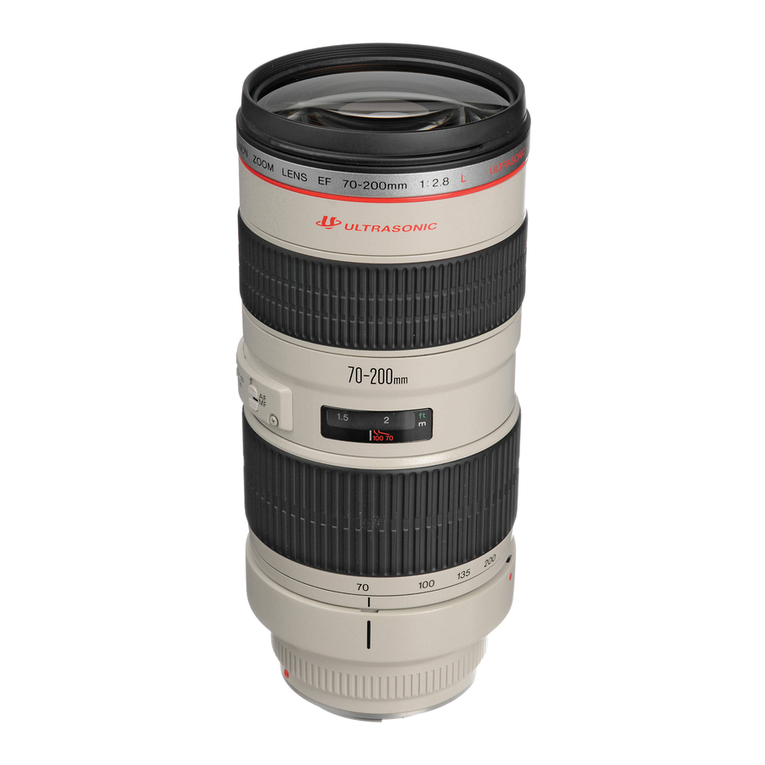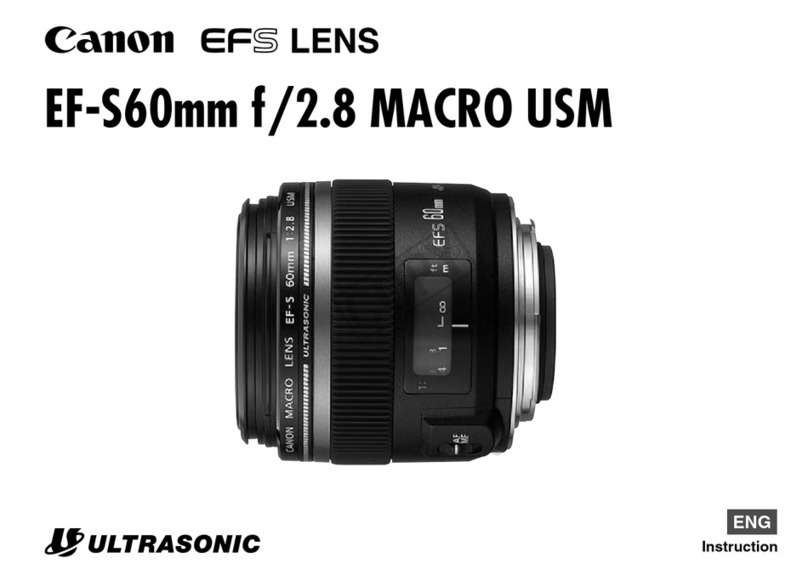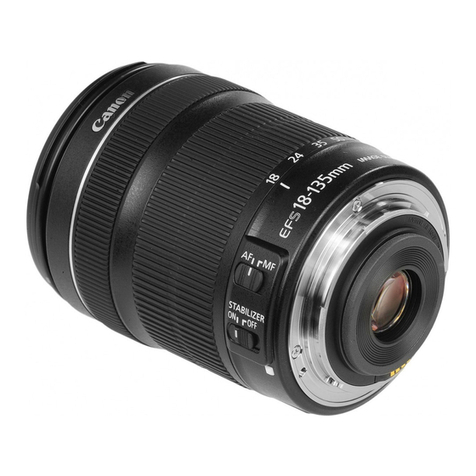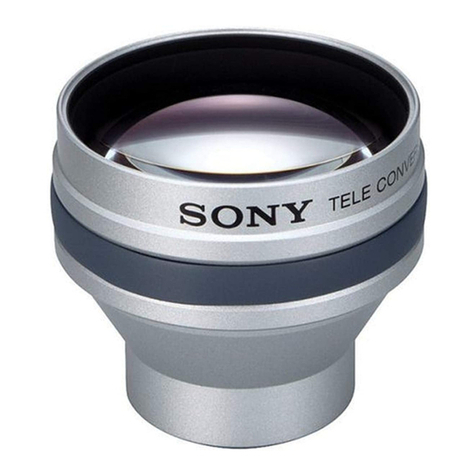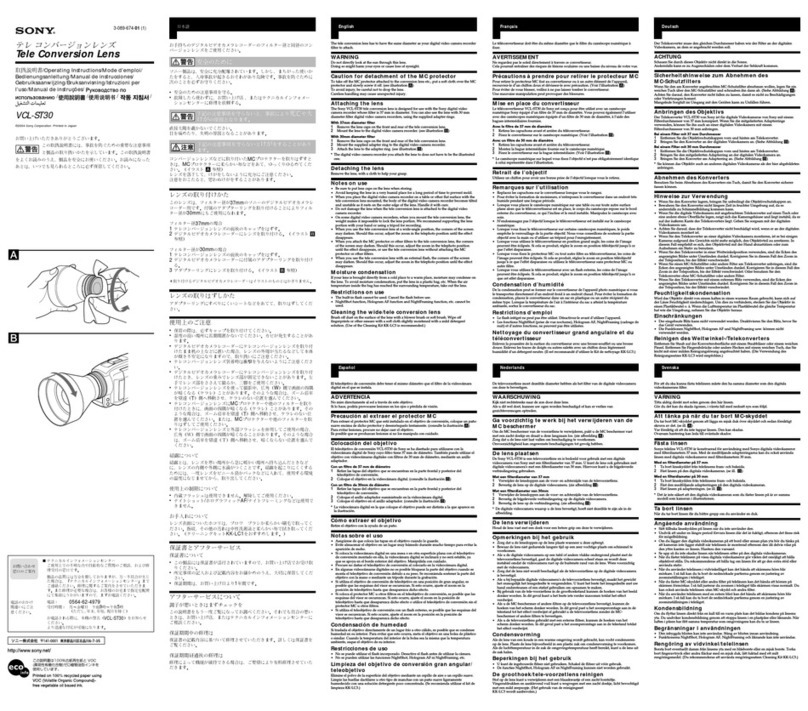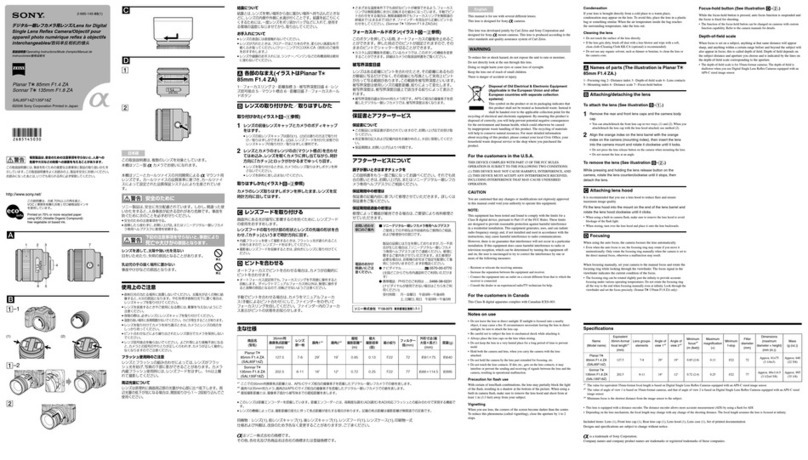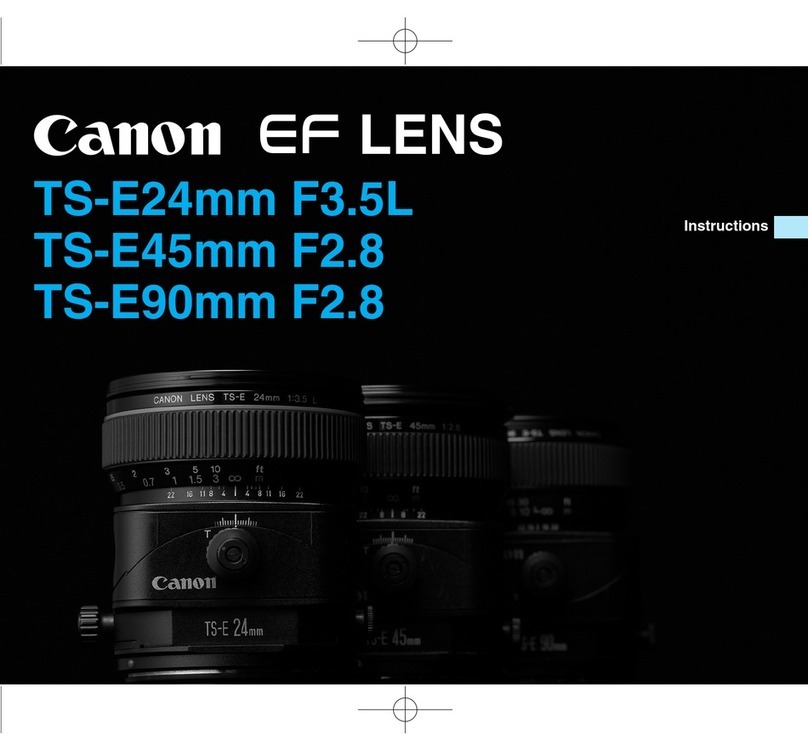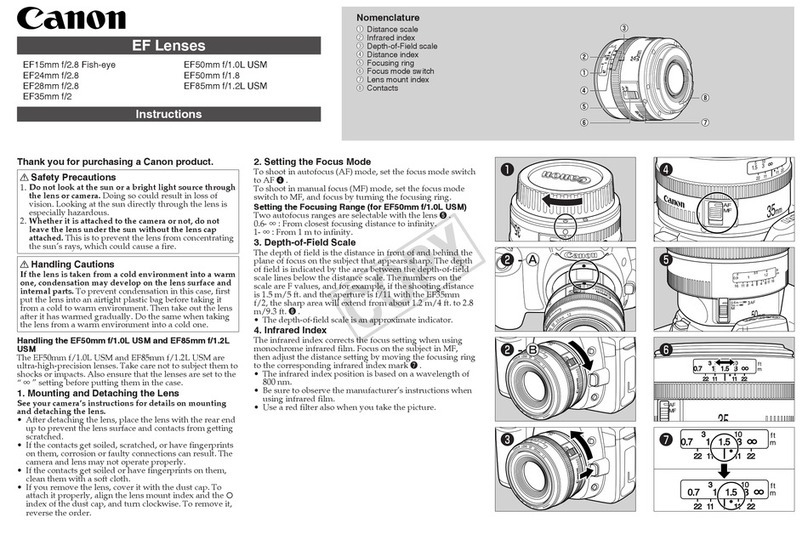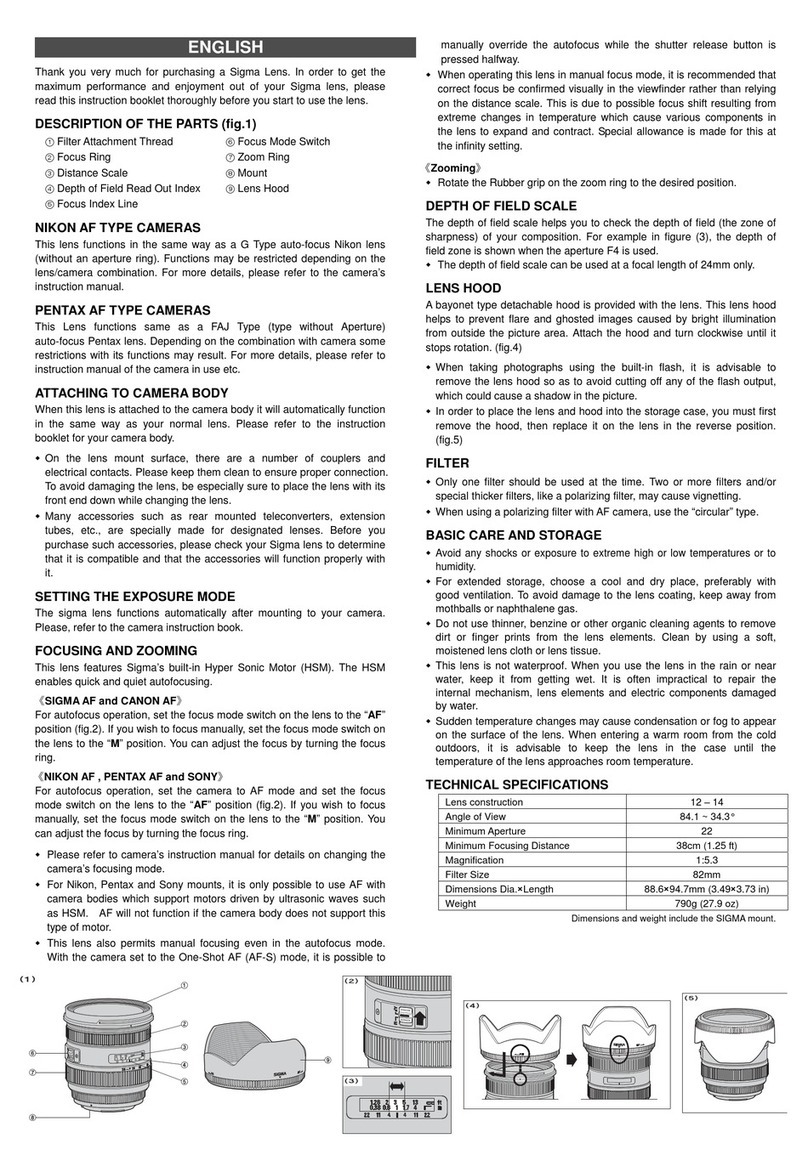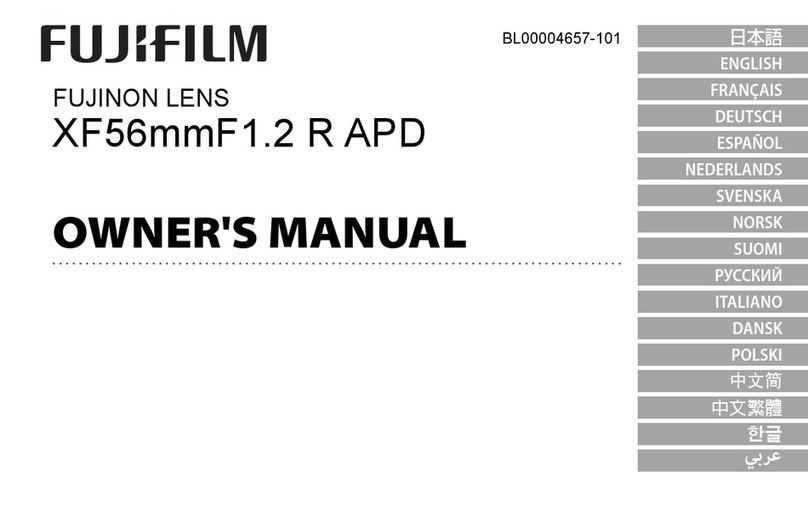
●❼
0.8 1.5 3
10
321632 16
53
1
ft
m
●❺
0.8 1.5 3
10
321632 16
53
1
ft
m
●❻-●Ⓐ
0.8 1.5 3
10
321632 16
53
1
ft
m
0.8 1.5 3
10
321632 16
53
1
ft
m
●❻-●Ⓑ
CT1-8537-002 © CANON INC. 2006
5. Setting the Exposure
When taking photographs using TTL metering, no exposure
compensation is necessary to meter the light coming through the lens.
With TTL metering, AE (autoexposure) is possible at all focusing
distances. Just set the desired picture-taking mode, then check the
shutter speed and aperture before taking the picture.
When you use a handheld exposure meter to set the exposure, you must
take into account the exposure factor shown in the following table.
EF50mm f/2.5 Compact macro lens only
Magnification 1:10 1:8 1:6 1:5 1:4 1:3 1:2.5 1:2
Effective f/No. 1.21 1.27 1.36 1.44 1.56 1.78 1.96 2.25
Exposure Factor
(stops)
in ½ stops 0 +½ +1.0
in ¹ä³stops 0 +²ä³+1.0 +1¹ä³
EF50mm f/2.5 with Life Size Converter EF
Magnification 1:4 1:2 1:1.5 1:1.2 1:1
Effective f/No. 1.64 1.87 2.16 2.49 2.86
Exposure Factor
(stops)
in ½ stops +½ +1.0 +1½
in ¹ä³stops +²ä³+1.0 +1¹ä³+1²ä³
EF100mm f/2.8 Macro
Magnification 1:4 1:3 1:2.5 1:2 1:1.5 1:1
Effective f/No. 1.44 1.61 1.76 1.99 2.41 3.38
Exposure Factor
(stops)
in ½ stops +½ +1.0 +1½ +2.0
in ¹ä³stops +¹ä³+²ä³+1.0 +1¹ä³+1²ä³
• The correct exposure for a close-up shot largely depends on the
subject. Therefore, it is recommended to take several shots of the
same subject at different exposures.
• When taking close-up shots, it is recommended to use aperture-
priority AE (Av) or Manual (M) picture-taking modes, because depth of
field and exposure are easy to adjust in those modes.
6. Depth-of-Field Scale
The depth of field is the distance in front of and behind the plane of focus
on the subject that appears sharp. The depth of field is indicated by the
area between the depth-of-field scale lines below the distance scale.
The numbers on the scale are F values (with the EF50mm f/2.5 Compact
macro ❺).
• The depth-of-field scale is an approximate indicator.
7. Infrared Index (EF50mm f/2.5 Compact macro only)
The infrared index corrects the focus setting when using monochrome
infrared film. Focus on the subject in MF, then adjust the distance setting
by moving the focusing ring to the corresponding infrared index mark ❻
-Ⓐ, Ⓑ.
• Some EOS cameras cannot use infrared film. See the instructions for
your EOS camera.
8. Filters
You can attach filters to the filter mounting thread on the front of the
lens ❼.
• Only one filter may be attached.
• Use a polarizing Canon filter (52 mm).
9. Specifications
EF50mm f/2.5 EF100mm f/2.8
Focal Length/Aperture 50mm, f/2.5 100mm, f/2.8
Lens Construction 8 groups, 9 elements 9 groups, 10 elements
Angle of View Diagonal–46°
Vertical–27°
Horizontal–40°
Diagonal–24°
Vertical–14°
Horizontal–20°
Focusing Distance
Ranges 0.23 to ∞m
(0.58 to ∞inch)
0.31 to ∞m full (0.79 to
∞inch)
0.31 to 0.57 m (0.8 to
0.14 inch) with limit
0.57 to ∞m (1.45 to ∞
inch) with limit
Max. Magnification 0.5×/1× (with Life Size
Converter EF attached) 1×
Filter Diameter 52 mm
Max. Diameter and
Length 67.6 × 63 mm
(2.7 × 2.5 inch) 75 × 105.3 mm
(3 × 4.1 inch)
Weight 280 g (9.8 oz) 650 g (1.42 lb)
QThe lens length is measured from the mount surface to the front end
of the lens. Add 21.5 mm when including the lens cap and dust cap.
QThe size and weight listed are for the lens only, except as indicated.
QAperture settings are specified on the camera.
QAll data listed is measured according to Canon standards.
QProduct specifications and appearance are subject to change without
notice.
QCase and hood not provided with some models.
QFilters sold separately.
This device complies with Part 15 of the FCC Rules. Operation
is subject to the following two conditions: (1) This device may
not cause harmful interference, and (2) this device must accept
any interference received, including interference that may cause
undesired operation.
Do not make any changes or modifications to the equipment
unless otherwise specified in the instructions. If such changes
or modifications should be made, you could be required to stop
operation of the equipment.
This equipment has been tested and found to comply with the
limits for a class B digital device, pursuant to part 15 of the FCC
Rules.
These limits are designed to provide reasonable protection against
harmful interference in a residential installation. This equipment
generates, uses and can radiate radio frequency energy and, if
not installed and used in accordance with the instructions, may
cause harmful interference to radio communications.
However, there is no guarantee that interference will not occur
in a particular installation. If this equipment does cause harmful
interference to radio or television reception, which can be
determined by turning the equipment off and on, the user is
encouraged to try to correct the interference by one or more of the
following measures:
• Reorient or relocate the receiving antenna.
• Increase the separation between the equipment and receiver.
• Consult the dealer or an experienced radio/TV technician for
help.
This Class B digital apparatus complies with Canadian ICES-003.
